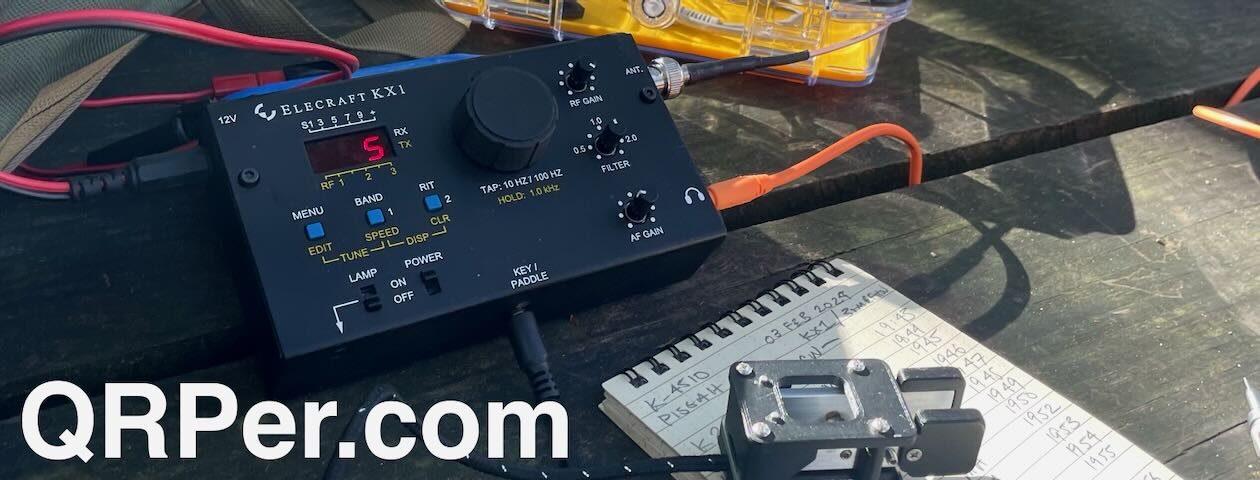
Many thanks to Andrew (VK2ZRK) who writes:
Hello Thomas,
The area I live near Canberra in Australia has many SOTA summits that are easily activated on 2m with a HT. That said a good antenna always helps. The 2m oblong antenna is very popular in these parts. It is easy to make, light to carry and packs small. It is horizontally polarised.
This is the second oblong I have built. I gave my dad VK4FASR my first one and have finally built another. I mostly use the bottom of the band for SSB/morse, the middle for APRS on 145.175 and 145.500 for SOTA. The antenna is cut accordingly.
References:
Andrew VK1AD
https://vk1nam.wordpress.com/2019/09/29/antenna-project-2m-145-mhz-rectangular-loop/
Peter VK3YE
https://youtu.be/Nyttl277ehs?si=9M5mP-KlxTGln0Tm
PARTS LIST
(Sorry about the lack of Freedom units)
-
- 8mm fibreglass tube.
- 8mm ID kite nocks (both from a kite supply).
- Double walled glue lined heat shrink.
- 2200mm Antenna wire – DX Commander in this case.
- 2mm ‘ZingIt’ dyneema.
- A BNC to banana adapter.
Assembly
I cut the tube so the centre to centre distance between the holes in the kite nocks was 360mm as per Andrew VK1AD’s instructions.
With the wire I started with 2200mm and trimmed until I had the best SWR at 145.000 when I lost my nerve and stopped cutting. [See photos below.]
Everything is held together with the glue lined heat shrink.
The top tube includes a little loop made from the ZingIt to suspend the antenna. Total weight is 102g.
The 2mm ZingIt can hold about 200Kg. I hope the pics make sense
73
Andrew VK2ZRK










Very nice! I’ve got a less durable design for 6m that’s built with low-cost hardware store wooden yardsticks; having meter sticks would have been better for the rectangle. Do you have enough 6m activity to consider that as well?
Andrew, since you already have all the bits and pieces, you may consider turning your “oblong loop” into a so-called “H double bay antenna”, the design from Paul Carr (N4PC) dates back to 1995 and the relevant informations about such antenna can be found here
http://techdoc.kvindesland.no/radio/antennas/20061010171117339.pdf
as you can see, the advantage is a better gain than the “single loop” version and a lower takeoff angle due to the effect of the “upper section”; the resulting antenna can be calculated/built for any frequency, although the size will remain “manageable” only up to the 20m band, but for shorter wavelengths it may be a good choice for a portable antenna
As a final note, if you seek the intertubes, you’ll find a number of other pages describing and detailing the antenna and a number of videos about it
Found the link to the website where I initially found informations about the “h-dbay”, it isn’t alive anymore, but luckily the “web archive” carries a copy, here’s the link
http://web.archive.org/web/20210216050430/https://sites.google.com/site/wvfisher/hdoublebay
if you check the site you’ll see that the antenna was used with great success for VHF contests 😀 and you’ll also find further infos and tips about building it
Google H Doublebay antenna. It’s very popular in my area, being larger it’s got more gain, than your oblong. We use them horizontally for SSB /CW/FT-8 on 50 & 144 mhz.its also bi-directional too..
HI,
I try the measurements of Peter VK3YE I can’t have better than 5.0 swr on 140 MHz, if I shorten the long side to 590 mm I have 1.4 swr on 144 MHz ….. Why ??? Vertical or Horizontally now ???
73
VA2QDB
the loop can be calculated this way
https://qrper.net/viewtopic.php?t=330
it will work fine at V/UHF and has “manageable side” down to 14MHz (20m), gain and further infos at the above link